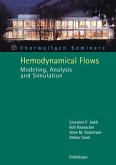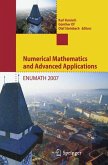Almost all physical phenomena can be mathematically described in terms of differential equations. The finite element method is a tool for the appro- mate solution of differential equations. However, despite the extensive use of the finite element method by engineers in the industry, understanding the principles involved in its formulation is often lacking in the common user. As an approximation process, the finite ele~ent method can be for- lated with the general technique of weighted residuals. This technique has the advantage of enhancing the essential unity of all processes of approxi- tion used in the solution of differential equations, such as finite differences, finite elements and boundary elements. The mathematics used in this text, though reasonably rigorous, is easily understood by the user with only a basic knowledge of Calculus. A common problem to the courses of Engineering is to decide about the best form to incorporate the use of computers in education. Traditionalc- pilers, and even integrated programming environments such as Turbo Pascal, are not the most appropriate, since the student has to invest much time in developing an executable program that, in the best of cases, will be able to solve only one definitive type of problems. Moreover, the student ends up learning more about programming than about the problem that he/she wants to solve with the developed executable program.
From the reviews: "The purpose of this book is to illustrate how the computational environment of Maple can be used in a finite element ... . It gives to the reader a very unique insight into the finite element method together with symbolic programming approach ... . In summary, this book is an excellent introductory book for finite element method and I strongly recommend to all undergraduate and postgraduate students and also to engineers and scientists who wish to program easily the finite element method." (T.E. Simos, Journal of Computational Methods in Sciences and Engineering, Vol. 3 (2), 2003) "This book is an essential tool written to be used as the primary text for an undergraduate or early postgraduate course as well as a reference book for engineers and scientists who want to develop quickly finite-element programs." (European Journal of Mechanical and Environmental Engineering, Vol. 47 (2), 2002)







